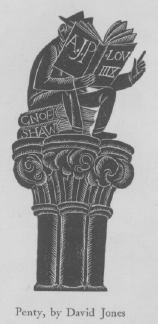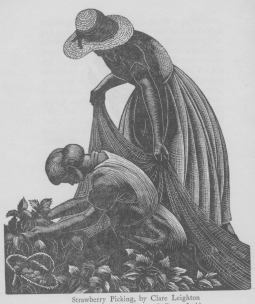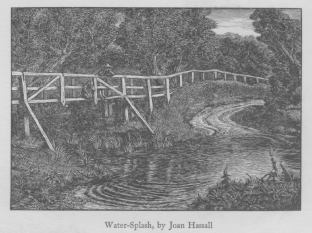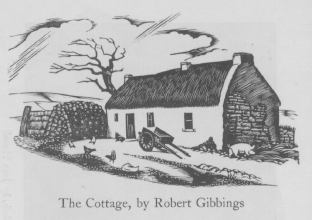Wood Engraving
The beginner should commence with patterns and pictures of white lines on black. The normal development of this first method is the silhouette with white line upon it. Having attained skill with gravers and scaupers he may proceed to engrave patterns and pictures of black lines on white, first in plain outline, and then, last of all, he may attempt the modelling and elaboration of the general surface.
The method of wood-engraving which is described in this book is distinct from that known properly as 'wood-cutting'. The 'woodcut' is done with a knife on the long grain of the wood instead of the end grain. It is necessarily done on soft wood and is therefore less suitable for use in conjunction with type in a printing press, except for large work. But the wood-engraver should certainly practise the art of wood-cutting also and for the purpose he will require, in addition to some planks of pear wood or a similar fine-grained wood, a knife and several wood-carver's chisels and gouges - the first for cutting lines and edges and the latter for cutting away the background. The knife (Fig. 26) is the most important of these tools and the best form is like a very fine carpenter's chisel with a small handle, such as can be grasped in the fingers, a short blade about one inch long, three-eighths of an inch wide and as thin as that of a pen-knife, with the cutting end ground at an angle of about 30 degrees with the upper edge.
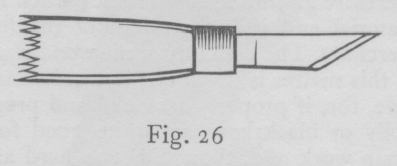
It is held very much as a pen is held for writing and, of course, the cut is made always in the direction which does not burr the grain of the wood just as a skewer is sharpened by cutting towards and not away from its point.
Although in connection with the printing press the wood-cut has not the same usefulness as the wood-engraving on account of the soft wood necessarily used and the impossibility of doing the finest work with the same degree of precision, nevertheless, as an independent art that of wood-cutting is on an equality with any other, and, in one respect, the fact that only soft wood can be used is an advantage; for such wood, pine or pear, is more easy to get than a hard foreign wood like the Turkish box-wood. The wood-cutter may therefore go into his own back garden for his material and is independent of the foreign merchant. The difficulty of the wood-engraver in this matter is, however, not quite insuperable, for, if properly seasoned and prepared, holly or blackthorn are quite good for end grain work and, though not as hard as boxwood, make a very fair substitute.
